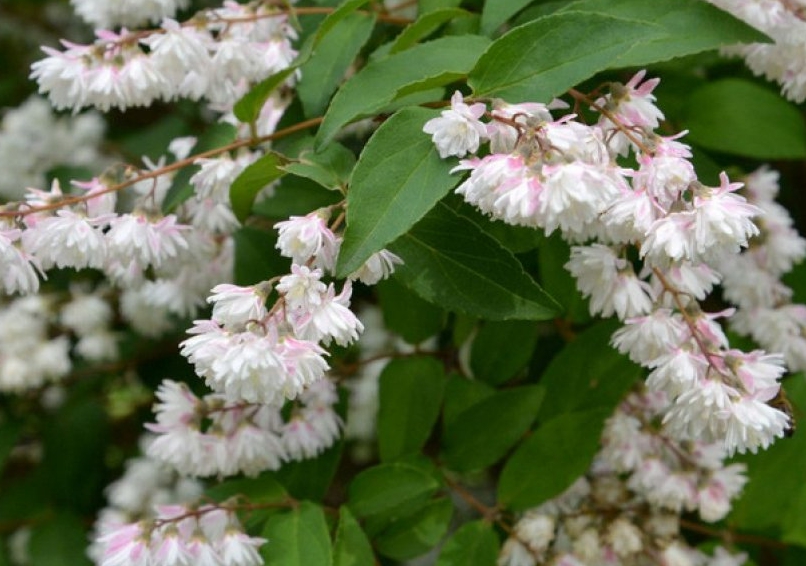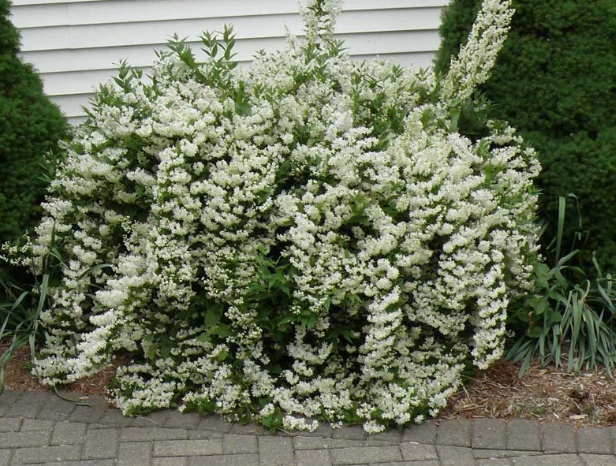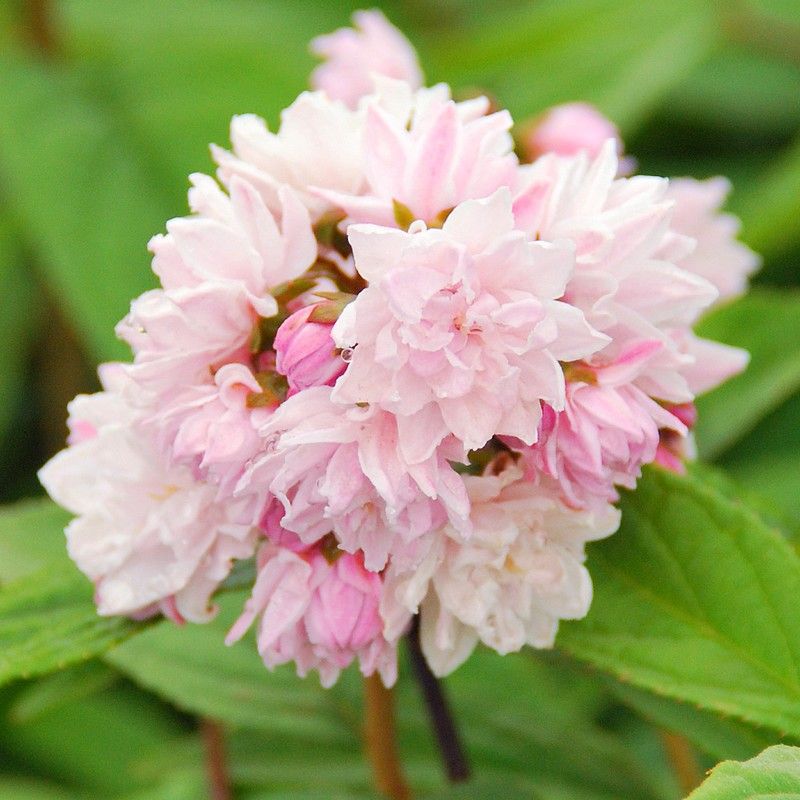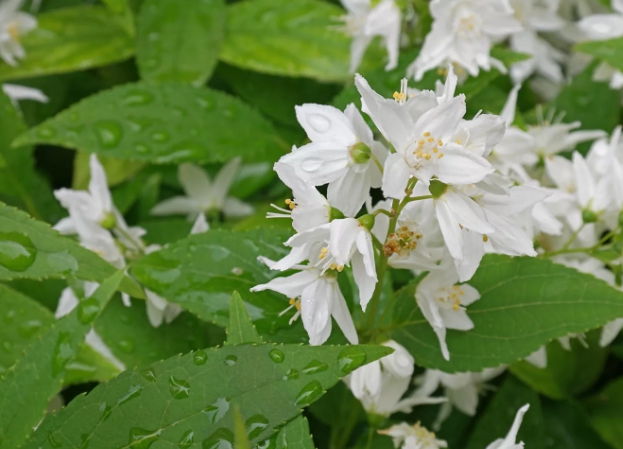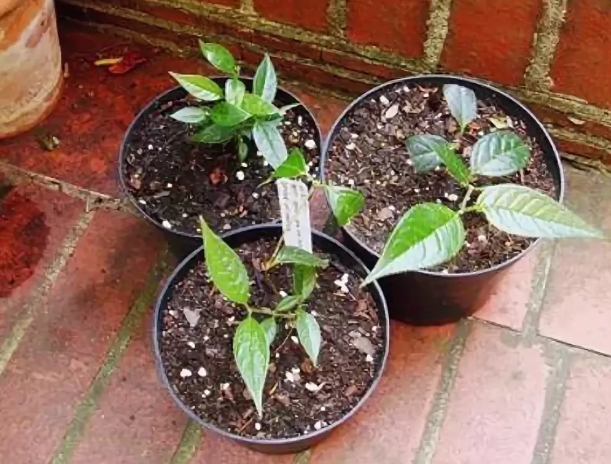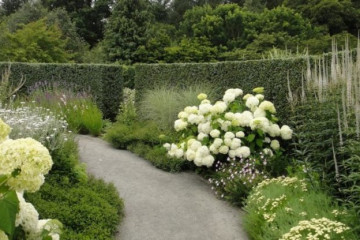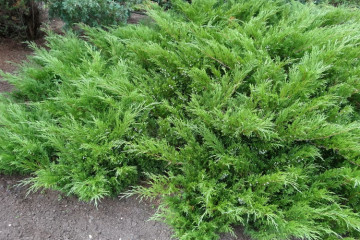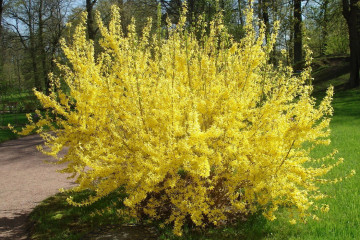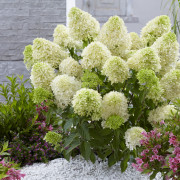Rough and white action - decorative shrub
Content:
Deytsia is a shrub that belongs to the Hortensia family. It is found naturally in China, Japan and Mexico. The culture is great for single plantings in the garden. It is also actively used to decorate hedges or gazebos. At the same time, it is quite easy to care for the culture, because it is very popular with flower growers.
Description of the action and its features
This plant is a perennial deciduous shrub that reaches 0.5-4 m in height. The culture can grow on the site for 25 years. Shoots grow about 25 cm each year. Side branches are formed directly from the soil surface. The plant grows well in moist soil.
The action is characterized by a mixed rhizome. It includes 1-2 long processes and many fibrous roots. The stems are covered with dark brown bark. It has a smooth texture.
Shoots have opposite petiole leaves. They are oval or ovoid in shape. Smooth and tough leaves have serrated edges. In autumn, they acquire a yellow-brown color.
In late spring, last year's shoots cover racemose inflorescences. They include small flowers 1-2 cm in size.
At the same time, the bushes exude a delicate aroma. Then spherical seeds appear on them.
Popular types and varieties of action
Deutzia has quite a few varieties, each of which has certain characteristics. This allows the gardener to choose the best option.
Deutzia scabra
According to the description, it is a sprawling ornamental shrub that reaches a height of 2.5 m. The shoots are covered with petiole leaves. They have an oval shape. Rough leaves reach 3-8 cm and are covered with short hairs. The flowering culture begins in mid-June. At the same time, small white flowers literally "stick around" it.
Deytsiya most graceful (D. x elegantissima)
This hybrid reaches a height of 1.5 m and has oval leaves. They have serrated edges. The plant is characterized by purple-pink buds forming racemose inflorescences. The most common representative of this species is Pearl Rose. It is known for its beautiful pink buds.
Action Turbilon Rouge
This decorative culture has lush inflorescences. They look a bit like hydrangeas in appearance. The flowers are characterized by a pinkish tint and a delicate scent. The shrub retains its excellent appearance during the flowering period. It reaches a height of 2 m.
Deutzia x rosea
It is a lush hybrid characterized by bell-shaped flowers. The buds have a rich pink color. Inflorescences are racemose. They decorate the bushes in June-July. Each brush contains 15-30 buds. The shrub can reach a height of 2.5 m. The plant is covered with thick leaves. They have a rich green color.
Deutzia graceful, or slender (Deutzia gracilis)
This interesting golden shrub has a round shape. It is characterized by beautiful white buds that form flowers of 6-10 cm. The plant blooms throughout June. Drought tolerance is considered a distinctive feature of the culture.
The most popular representative of this variety is the Nikko variety. This short shrub has white flowers that resemble bells in appearance. The culture is characterized by long flowering, which lasts from May to July. With the arrival of autumn, the leaves turn red.
Outdoor care
Care and planting of the action shrub has certain features. To grow a sturdy plant, it must be properly cared for.
Watering
In heat and drought, it is recommended to water the bushes 2-3 times a month. During the period of precipitation, it is necessary to moisten the soil as the topsoil dries out. For 1 plant, it is worth using 15-20 liters of water.
Top dressing and fertilization
This plant needs to be fertilized three times throughout the season. For the first time, it is necessary to cover the trunk circle with humus. The second time you should use liquid mineral dressing. They are brought in before flowering is complete.
The last dressing must be done before pruning. To do this, you should use a mullein solution, mixing it with water 1:10. For 1 bush, you need to use 10 liters of the product.
Diseases and pests
Deycela is a shrub, the cultivation and care of which includes the prevention of diseases. The plant is resistant to major pathologies and parasites. But at the same time, it is necessary to loosen the soil in a timely manner, thin out the crown, remove withered leaves and dry shoots.
The most dangerous parasites are aphids, caterpillars and ticks. Means such as "Actellik" and "Decis" help to cope with pests. There is also a risk of damage to the bushes by the bumblebee proboscis. Get rid of it with the help of solutions "Karbofos" and "Phthalofos".
Selecting seedlings and planting action in open ground
For a plant to develop normally, it must be properly planted. In doing so, it is important to remove attention to the choice of the site for the culture.
Choosing a landing site
The plant needs enough sun. He also needs a nutritious soil. You should not place the flower in places with a high location of groundwater.
How to plant
Planting work should be carried out in early April. The culture should be planted in pits prepared in advance. They must have a depth of at least 35 cm. The planting of a flower must be carried out at an air temperature of 0 ... + 2 degrees.
Culture propagation is performed in the following ways:
- Seed method. In this case, the seeds can be planted in open ground or seedlings can be grown from them. Direct landing takes place at the end of August.
- By cuttings. To do this, from the most powerful bush, you need to cut cuttings 18 cm long, treat them with growth stimulants and place them in a container with soil. At the end of summer, you need to move the cuttings to the garden. Follow-up care includes timely watering and loosening of the soil. At the stage of active development of the culture, it is necessary to apply fertilizers.
Bush formation
To give the bush the correct shape, it must be cut off in time.Crop care should be started in early spring. When the first leaves appear, the condition of the shoots can be assessed. In this case, branches affected by frost must be removed.
The second pruning is done after flowering is complete. During this period, it is necessary to get rid of the peduncles, cut the shoots and form the crown. At the same time, it is worth performing anti-aging pruning.
Frost resistance and shelter for the winter
In order for the wood of the shrub to have time to ripen by frost, it is necessary to abandon watering the plant in August. In early September, the plant should be covered with a moisture-proof material that will protect the crop from heavy autumn rainfall.
You need to cover the bushes for the winter in 2 stages:
- At the onset of the first frost, the branches of small bushes must be pressed to the ground, fixed and then covered with earth. The branches of tall plants must be tied up and insulated with thick burlap.
- If the average daily temperature is less than 0 degrees, the base of the bushes should be covered with spruce branches. Such insulation helps to trap snow and prevent shrubs from freezing.
In the spring, when the threat of frost passes and the snow melts, the insulation must be removed. This will help avoid debate about the root system.
Deytsia is a popular ornamental crop grown by many flower growers. This plant is actively used in landscape design and helps to decorate garden plots. In this case, the shrub requires adequate and comprehensive care. It needs to be watered, cut, fed on time. The prevention of diseases and pests is of great importance.
